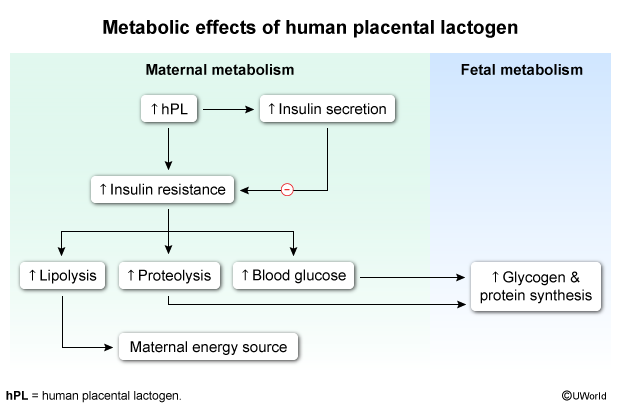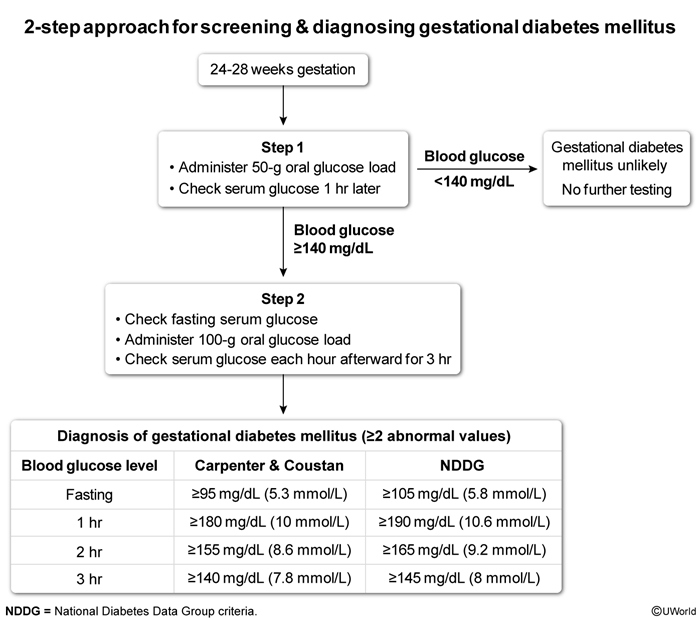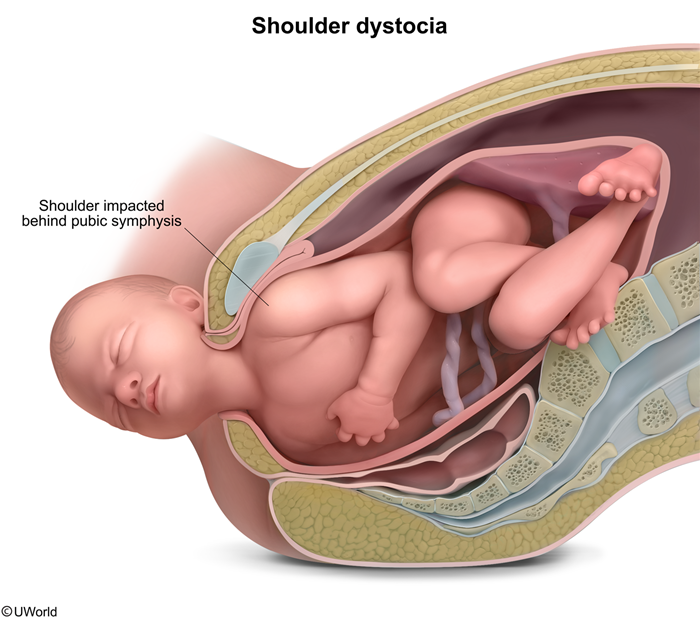Gestational Diabetes Mellitus
Article Sections
Introduction
Gestational diabetes mellitus (GDM) is a pathologic pregnancy condition in which there is insufficient pancreatic beta-cell function to appropriately balance the physiologic insulin resistance of pregnancy, leading to maternal hyperglycemia.
Pathophysiology
During the second and third trimesters of pregnancy, the fetus has an increased demand for glucose and other nutrients due to accelerated growth and increased metabolic demands. This demand is mediated by placental hormones, most notably human placental lactogen (hPL). hPL is a placental somatomammotropin secreted by syncytiotrophoblasts, and it establishes a glucose-sparing effect that results in (Figure 1):
- Increased maternal glucose levels, which allow glucose to freely cross the placenta for consumption by the fetus for energy
- Increased maternal proteolysis, which provides a readily available supply of amino acids for the fetus
Continue Learning with UWorld
Get the full Gestational Diabetes Mellitus article plus rich visuals, real-world cases, and in-depth insights from medical experts, all available through the UWorld Medical Library.
Figures


